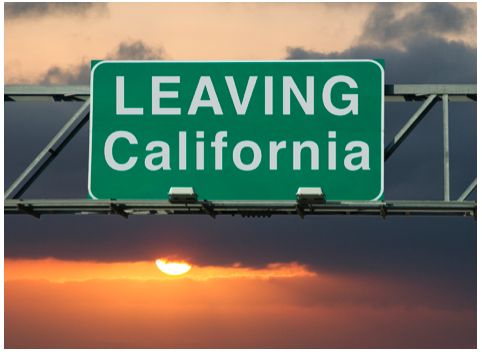CommentsCAL MATTERS - The COVID-19 pandemic has wrought what appear to be permanent social and economic changes and nowhere is that more evident than in California.
Its disproportionate impact has laid bare, and even deepened, its socioeconomic fault lines — particularly ever-widening gaps between a mostly white and Asian overclass and a mostly Black and Latino underclass — that belie its conceits about mobility and inclusion.
Low-income workers in sectors that required physical presence, such as agriculture and logistics, ran a much-greater risk of infection, and many of them lost their jobs altogether. Meanwhile, workers in jobs that could be done remotely via computer safely used home offices and saw their incomes continue.
The state’s clumsy, politics-saturated handling of public education during the pandemic left millions of poor, non-white students to largely fend for themselves while schools serving affluent communities adjusted more adroitly.
California’s endemic housing shortage worsened, driving rents and home prices ever-higher and eroding the ability of Californians to house themselves and their families.
The state is still hundreds of thousands of jobs short of returning to pre-pandemic employment levels. Our unemployment rate is one of the nation’s highest and our poverty rate, adjusted for the cost of living, is still the highest.
These disturbing trends raise a question: Has California reached a plateau and perhaps begun to decline, or is it, as Gov. Gavin Newsom proclaims, making a “comeback” of historic proportions?
A sobering poll of residents of the San Francisco Bay Area, the state’s most important economic engine, frames the issue.
Joint Venture Silicon Valley and the Bay Area News Group commissioned the poll which found widespread dissatisfaction with the region’s economic and social life and an inclination toward going elsewhere.
The poll found that 71% of respondents feel the quality of life in the Bay Area has grown worse over the past five years. A slight majority say they are likely to leave the Bay Area in the next few years, most citing high housing and other living costs and deteriorating quality of life.
Joint Venture president Russell Hancock calls it “a smothering amount of anxiety.”
The Bay Area’s dissatisfaction and pessimism is significant because its residents are overwhelmingly blue politically in a state dominated by the Democratic Party. One would expect to feel such negative vibes in the rural counties that voted to recall Newsom last month, but finding them in the Bay Area should be a political wakeup call.
A new study by Stanford University’s Institute for Economic Policy Research should be another. It delves into the differences between California and its economic and ideological arch-rival, Texas.
The study confirms what we already assumed, that California is a high-taxing and high-spending state while taxes are much lower in Texas and so is public spending. However, while California leads Texas in some measures, such as health care coverage, it also falls short of its rival in other key indices.
Despite much-lower school spending, Texas scores better than California in K-12 academic achievement. Its standing on homelessness, and housing availability and prices is better. Texas locks up more criminals, relatively, but also has a lower violent crime rate. Its power grid is more reliable and its power costs are a fraction of California’s.
Finally, while California’s population growth has been virtually nil of late, which is why it’s losing a congressional seat, Texas continues to boom — one reason being a steady flow of transplants from California such as electric car tycoon Elon Musk — and is gaining two seats.
Whether California truly comes back from the pandemic or languishes will be very revealing.
(Dan Walters has been a journalist for nearly 60 years, spending all but a few of those years working for California newspapers. He has written more than 9,000 columns about California and its politics and his column has appeared in many other California newspapers. Walters has written about California and its politics for a number of other publications, including The Wall Street Journal and the Christian Science Monitor. In 1986, his book, “The New California: Facing the 21st Century,” was published in its first edition. He is also the founding editor of the “California Political Almanac,” the co-author of a book on lobbying entitled “The Third House: Lobbyists, Money and Power in Sacramento,” and contributed chapters to two other books, “Remaking California” and “The New Political Geography of California. He also has been a frequent guest on national television news shows, commenting on California politics, and is a writer for Cal Matters,. [email protected].)
















